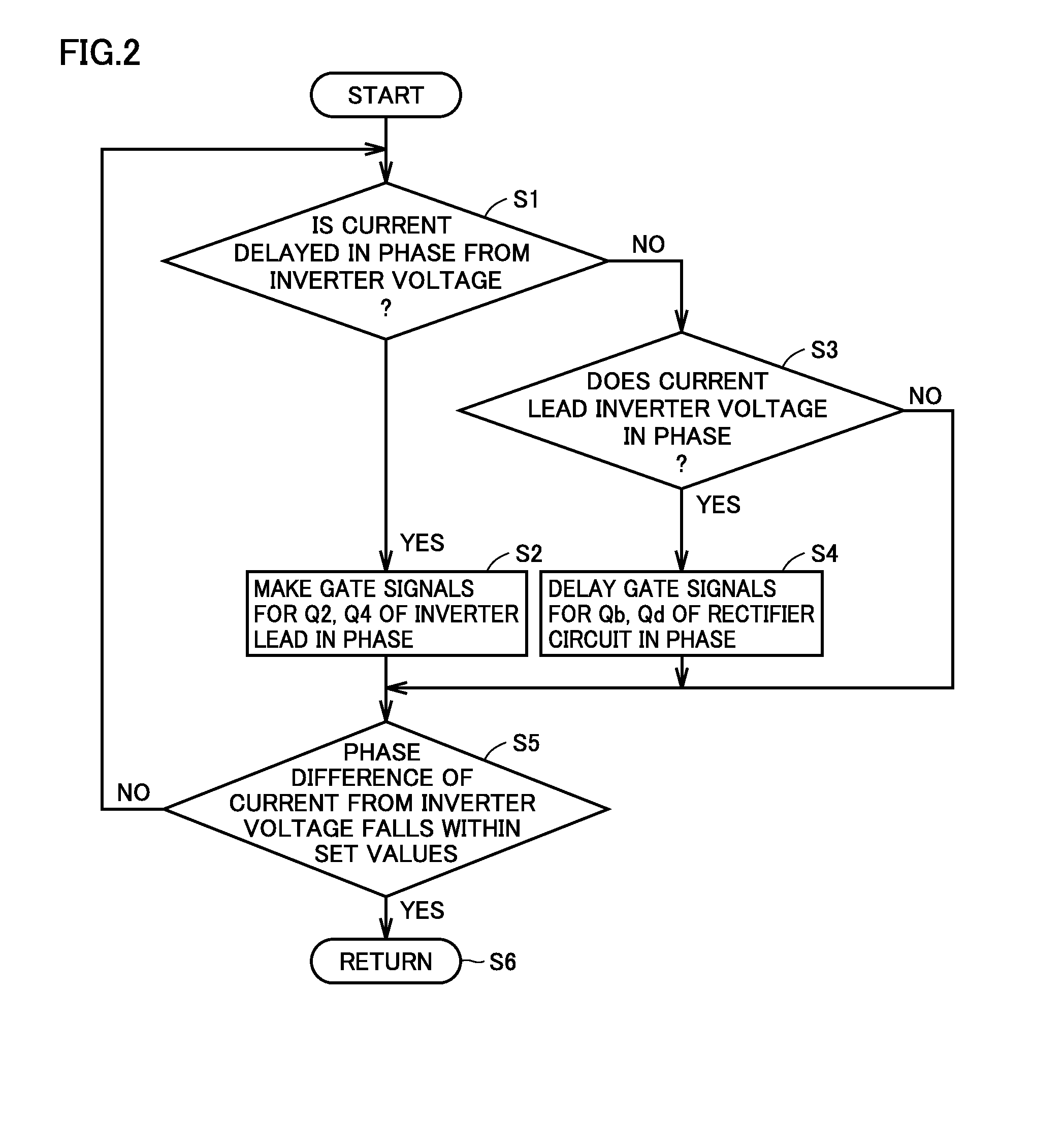Non-contact power transmitting and receiving system
a technology of non-contact power and transmission system, applied in the direction of transformers, inductances, sustainable buildings, etc., can solve the problems of reducing transmission efficiency, increasing installation space, increasing cost, etc., and achieve the effect of suppressing the size increase of the system, improving power transmission efficiency, and cost increas
- Summary
- Abstract
- Description
- Claims
- Application Information
AI Technical Summary
Benefits of technology
Problems solved by technology
Method used
Image
Examples
first embodiment
[0035]FIG. 1 is an overall configuration diagram of a non-contact power transmitting and receiving system of a first embodiment. Referring to FIG. 1, a non-contact power transmitting and receiving system 100 includes a power transmitting apparatus 101 and a power receiving apparatus 102.
[0036]Power transmitting apparatus 101 includes a high-frequency inverter 1, a voltage-current sensor 12 detecting an output voltage and an output current of high-frequency inverter 1, a filter circuit 13, a power transmission unit 2A, and a power transmitting-side controller 5. High-frequency inverter 1 includes arms 1A and 1B connected in parallel to each other across a positive electrode power line and a negative electrode power line supplied with a DC voltage from a DC power supply (a primary-side rectifier circuit 17) on the power transmitting side. Arm 1A includes switching elements Q1 and Q3 connected in series. Arm 1B includes switching elements Q2 and Q4 connected in series.
[0037]Power recei...
second embodiment
[0080]The first embodiment shows the example of shifting the phase of switching of the inverter or switching of the rectifier circuit in accordance with the phase difference between the inverter current and the inverter voltage. In the second embodiment, an example of shifting the phase of the rectifier circuit further taking charging power and a receiving-terminal voltage-current ratio into consideration, and correcting the phase shift amount in accordance with the phase difference between the inverter current and the inverter voltage will be described.
[0081]FIG. 9 is an overall configuration diagram of a non-contact power transmitting and receiving system of the second embodiment.
[0082]In addition to the configuration of non-contact power transmitting and receiving system 100 shown in FIG. 1, a non-contact power transmitting and receiving system 200 shown in FIG. 9 further includes a receiving terminal voltage detection unit 7 and a battery current detection unit 8. Power receivin...
PUM
 Login to View More
Login to View More Abstract
Description
Claims
Application Information
 Login to View More
Login to View More - R&D
- Intellectual Property
- Life Sciences
- Materials
- Tech Scout
- Unparalleled Data Quality
- Higher Quality Content
- 60% Fewer Hallucinations
Browse by: Latest US Patents, China's latest patents, Technical Efficacy Thesaurus, Application Domain, Technology Topic, Popular Technical Reports.
© 2025 PatSnap. All rights reserved.Legal|Privacy policy|Modern Slavery Act Transparency Statement|Sitemap|About US| Contact US: help@patsnap.com



